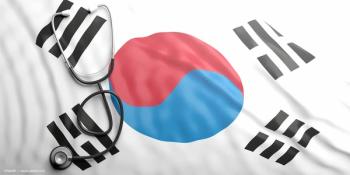
Perimenopausal patients at increased risk for dry eye
Hormone fluctuations and the aging process combine to make dry eye syndrome a risk for perimenopausal women. For this age group, aggressive therapy that includes an anti-inflammatory agent is usually necessary.
Key Points
"You need to consider the patient as a whole, especially since systemic conditions such as perimenopause can affect the eye," Dr. Rapuano said.
"We know that the sex hormones and hormone receptors are present throughout the eye," he continued. "They regulate genes in the lacrimal gland and also in the meibomian glands, and they stimulate the production of inflammatory mediators in and around the eye."
"In menopause, the combination of aging and hormonal changes gives you a double whammy effect in dry eyes," Dr. Rapuano said.
At least two clinical trials have looked at the effect of menopausal hormone therapy (MHT) on dry eye. The first and larger study, published in 2004 by Taner et al., was a prospective comparative trial involving 70 women who were assigned to either MHT with the testosterone analogue tibolone (Livial, Organon), another MHT regimen, or no MHT. The investigators found improved Schirmer test results and tear break-up time with the tibolone MHT regimen, Dr. Rapuano said.
Scott and colleagues published a retrospective case series in 2005. Eleven postmenopausal women with dry eye syndrome had been treated with combined esterified estrogen and methyltestosterone (Estratest, Solvay Pharma). Ten of the 11 subjects reported improved signs and symptoms after an average treatment period of 4 months.
Speaking at a continuing education symposium during the American Academy of Ophthalmology meeting, Dr. Rapuano used a case study to illustrate the symptoms, diagnosis, and treatment of dry eye in a perimenopausal woman.
The patient described was a 42-year-old pediatrician. Her symptoms included itching, foreign body sensation, severe burning, visual blurring, and excessive tearing. Because of these symptoms, she had limited the time she wore contact lenses, frequently used unpreserved artificial tears, and told her doctor that the dry eye had placed serious limitations on her ability to care for her patients.
She had a 5-year history of dry eye, with the condition gradually worsening. "For the first few years it really didn't bother her that much, but for the past few years she has had chronic symptoms," Dr. Rapuano said.
The patient's medical history included irregular periods and intermittent hot flashes, suggesting fluctuations in hormone levels due to perimenopause; she was not using MHT. Otherwise, her medical history was normal.
Dr. Rapuano's approach to diagnosing this patient included obtaining her history and symptoms, and conducting a physical examination that revealed normal meibomian gland secretions in the eyelids and no telangiectasias. There was 2+ injection of the conjunctiva.
Tear break-up time was less than 5 seconds in both eyes, and there was decreased tear meniscus. Schirmer test results were 5 mm OD, 6 mm OS (without anesthesia). Results of ocular surface tests showed grade 1 to 2 for both fluorescein staining and lissamine green staining.
The differential diagnoses considered for this patient were dry eye, allergies, contact lens-related keratopathy, and meibomian gland dysfunction. Dry eye was considered probable, while allergies were unlikely because the patient's symptoms were constant rather than affected by seasonal variation. Contact lens-related keratopathy was considered possible and subsequently evaluated by discontinuing contact lens use. Meibomian gland dysfunction was ruled out because gland secretions were normal. The final diagnosis was chronic dry eye, possibly exacerbated by contact lens use.
Newsletter
Don’t miss out—get Ophthalmology Times updates on the latest clinical advancements and expert interviews, straight to your inbox.


















































.png)


